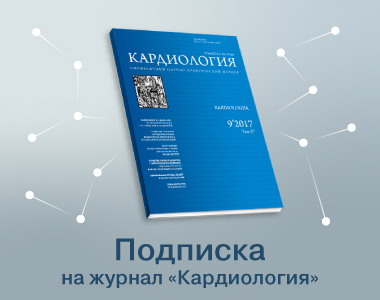Hidden systolic dysfunction of the right ventricle in patients with increased pulmonary vascular resistance 3 months after COVID-19 pneumonia
https://doi.org/10.18087//cardio.2022.3.n1743
Abstract
Aim To study the relationship of echocardiographic right ventricular (RV) structural and functional parameters and indexes of pulmonary vascular resistance (PVR) in patients 3 months after COVID-19 pneumonia.
Material and methods This cross-sectional, observational study included 96 patients aged 46.7±15.2 years. The inclusion criteria were documented diagnosis of COVID-19-associated pneumonia and patient’s willing to participate in the observation. Patients were examined upon hospitalization and during the control visit (at 3 months after discharge from the hospital). Images and video loops were processed, including the assessment of myocardial longitudinal strain (LS) by speckle tracking, according to the effective guidelines. The equation [tricuspid regurgitation velocity/ time-velocity integral of the RV outflow tract × 10 + 0.16] was used to determine PRV. Patients were divided into group 1 (n=31) with increased PRV ≥1.5 Wood units and group 2 (n=65) with PRV <1.5 Wood units.
Results At baseline, groups did not differ in main clinical functional characteristics, including severity of lung damage by computed tomography (32.7±22.1 and 36.5±20.4 %, respectively. р=0.418). Echocardiographic linear, planimetric and volumetric parameters did not significantly differ between the groups. In group 1 at the control visit, endocardial LS of the RV free wall (FW) (–19.3 [–17.9; –25.8] %) was significantly lower (р=0.048) than in group 2 (–23.4 [–19.8; –27.8] %), and systolic pulmonary artery pressure (sPAP) according to C. Otto (32.0 [26.0; 35.0] mm Hg and 23.0 [20.0; 28.0] mm Hg) was significantly higher than in group 2 (р<0.001). According to the logistic regression, only endocardial RV FW LS (odds ratio, OR, 0.859; 95 % confidence interval, CI, 0.746–0.989; р=0.034) and sPAP (OR, 1.248; 95 % CI, 1.108–1405; р<0.001) were independently related with the increase in PVR. Spearman correlation analysis detected a moderate relationship between PVR and mean PAP according to G. Mahan (r=0.516; p=0.003) and between PVR and the index of right heart chamber functional coupling with the PA system (r=–0.509; p=0.007) in group 1 at the control visit.
Conclusion In patients 3 months after COVID-19 pneumonia, hidden RV systolic dysfunction defined as depressed endocardial RV FW LS to -19.3% is associated with increased PVR ≥1.5 Wood units.
Keywords
About the Authors
N. E. ShirokovRussian Federation
Candidate of Medical Sciences, researcher of Instrumental Diagnostics Laboratory, Scientific Department of Instrumental Research Methods
Tomsk
E. I. Yaroslavskaya
Russian Federation
Doctor of Medicine, Head of Instrumental Diagnostics Laboratory, Scientific Department of Instrumental Research Methods
Tomsk
D. V. Krinochkin
Russian Federation
Candidate of Medical Sciences, Head of Ultrasound Diagnostics Department, Senior Researcher of Instrumental Diagnostics Laboratory, Scientific Department of Instrumental Research Methods
Tomsk
N. A. Osokina
junior researcher of Instrumental Diagnostics Laboratory, Scientific Department of Instrumental Research Methods
Tomsk
Review
For citations:
Shirokov N.E., Yaroslavskaya E.I., Krinochkin D.V., Osokina N.A. Hidden systolic dysfunction of the right ventricle in patients with increased pulmonary vascular resistance 3 months after COVID-19 pneumonia. Kardiologiia. 2022;62(3):16-20. https://doi.org/10.18087//cardio.2022.3.n1743
















